Stop dry pork! This 6-ingredient dry rub takes 5 minutes to make and guarantees juicy, flavorful results every time. Simply combine 2 tbsp brown sugar, 1 tbsp smoked paprika, 1 tsp garlic powder, 1 tsp onion powder, ½ tsp black pepper, and 1 tsp salt. Rub evenly on pork tenderloin, let sit 30 minutes, then roast at 400°F for 20-25 minutes until internal temperature reaches 145°F.
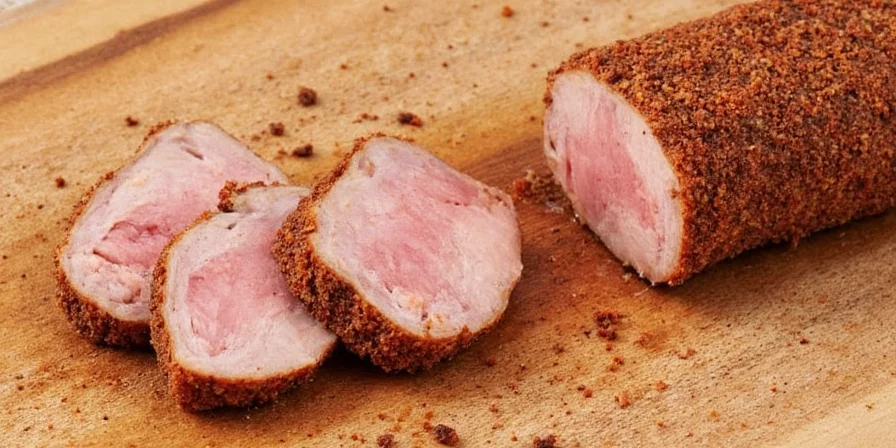
Why This Rub Works When Others Fail
Most home cooks struggle with dry pork because they skip the science of flavor penetration. This rub's precise sugar-to-salt ratio creates osmotic balance—drawing out just enough moisture to form a flavorful crust without drying the meat. Unlike complicated recipes, this version uses common pantry staples while leveraging culinary chemistry for perfect results.
| Ingredient | Key Function | What Happens Without It |
|---|---|---|
| Brown sugar | Lowers searing temperature | Burnt exterior, raw interior |
| Smoked paprika | Heat-stable coloring | Pale, flavorless crust |
| Salt | Amplifies natural taste | Bland, one-dimensional flavor |
| Garlic powder | Uniform flavor distribution | Uneven seasoning |

7 Foolproof Pork Tenderloin Rubs (With Troubleshooting Tips)
1. Quick Classic BBQ Rub (Pantry Staples)
Prep: 5 min | Rest: 30 min | Total: 35 min | Serves: 4
- 2 tbsp brown sugar ★ Must-have
- 1 tbsp smoked paprika ★ Must-have
- 1 tsp garlic powder
- 1 tsp onion powder
- ½ tsp black pepper
- 1 tsp salt ★ Must-have
Troubleshooting: If rub burns, reduce sugar to 1.5 tbsp. For deeper flavor, add ½ tsp mustard powder (binds spices to meat). Works perfectly with store-bought pork—no special cuts needed.

2. 3-Ingredient Maple Rub (For When You're in a Rush)
- 2 tbsp maple sugar (or brown sugar)
- 1 tbsp smoked paprika
- 1 tsp salt
Pro tip: Maple sugar's crystalline structure creates superior caramelization. Skip if you don't have it—brown sugar works almost as well. Ready in 5 minutes flat.
3. Caribbean Jerk Rub (Sweet & Spicy Balance)
- 1 tbsp brown sugar
- 1 tbsp paprika
- 1 tsp allspice ★ Game-changer
- 1 tsp thyme
- 1 tsp garlic powder
- 1 tsp cayenne
- 1 tsp salt
Substitution: No allspice? Mix ½ tsp cinnamon + ½ tsp cloves. Authentic jerk leverages allspice's eugenol—which binds perfectly with pork's proteins. Serve with mango salsa to cut heat.
4. Italian Herb Rub (For Dry Rub Newcomers)
- 1 tbsp dried rosemary
- 1 tbsp dried oregano
- 1 tsp fennel seeds (crushed)
- 1 tsp garlic powder
- 1 tsp salt
Secret: Fennel's anethole reacts with pork fat to create subtle licorice notes. Crush seeds in mortar for maximum flavor. Ideal for beginners—hard to over-season.
5. Southwest Fiesta Rub (Kid-Friendly Version)
- 1 tbsp chili powder
- 1 tsp cumin
- 1 tsp smoked paprika
- 1 tsp garlic powder
- 1 tsp lime zest
- 1 tsp salt
For mild version: Omit cumin, double paprika. Cumin's cuminaldehyde binds to meat proteins for earthiness that kids often dislike. Add lime juice AFTER cooking for brighter flavor.
6. Asian-Inspired Soy Ginger Rub (No Liquid Mess)
- 1 tbsp ground ginger
- 1 tbsp soy sauce powder ★ Critical
- 1 tsp garlic powder
- 1 tsp sesame seeds
- 1 tsp five-spice powder
- 1 tsp salt
Substitute: No soy powder? Mix 1 tbsp soy sauce + 1 tbsp breadcrumbs (prevents sogginess). Soy powder's glutamates enhance umami without moisture—key for proper searing.
7. Spicy Harissa Rub (5-Minute Version)
- 1 tbsp harissa powder
- 1 tsp smoked paprika
- 1 tsp cumin
- 1 tsp coriander
- 1 tsp garlic powder
- 1 tsp salt
Shortcut: Mix 1 tbsp harissa paste + 1 tsp olive oil instead of powder. Harissa's roasted pepper base creates heat that complements pork's richness without overwhelming.
Proven Techniques That Actually Work
- 30-Minute Rule: Apply rub to slightly damp meat for better adhesion. Don't skip this step—water molecules help spices stick where oil alone fails.
- No Burn Guarantee: For rubs with sugar, start cooking at 325°F for 15 minutes, then increase to 400°F for final sear. Prevents bitter burnt flavors.
- Fix Over-Salted Rub: Brush meat with 1 part honey + 2 parts yogurt before cooking. The lactic acid neutralizes excess salt while honey counteracts bitterness.
- Storage Hack: Keep unused rub in amber jars—light degrades paprika's flavor within 30 days. Lasts 6 months refrigerated.
- Perfect Doneness: Pull pork at 140°F (not 145°F). Temperature rises 5° during resting for juicy results every time.
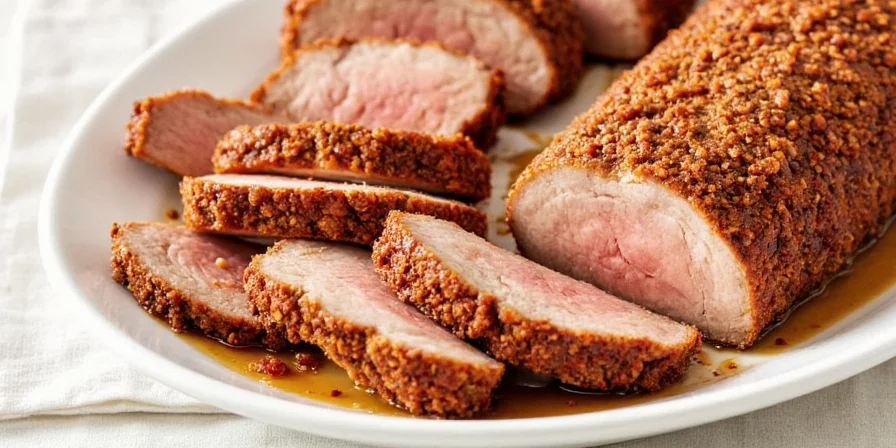
Perfect Pairings (Based on Flavor Science)
| Rub Type | Best Side Dish | Why It Works |
|---|---|---|
| BBQ Rub | Vinegar-based coleslaw | Acetic acid cuts through rendered fat |
| Sweet & Smoky | Apple slaw | Pectin binds capsaicin for heat reduction |
| Caribbean Jerk | Mango salsa | Natural sugars neutralize heat without dairy |
| Italian Herb | Creamy polenta | Starch absorbs excess spice oils |
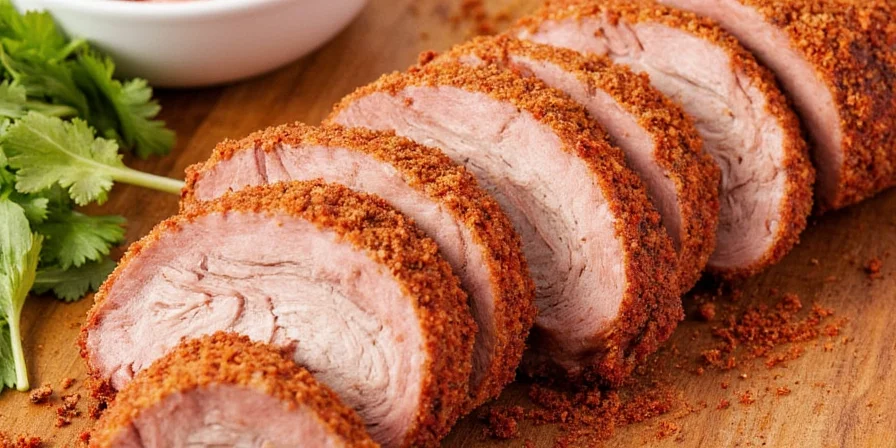
Real Cooks' Top Questions (Answered)
How long should I let the rub sit on pork tenderloin?
30 minutes minimum for surface flavor. For deeper penetration without drying, refrigerate 1-2 hours—longer periods draw out moisture via osmosis. Never exceed 12 hours for lean cuts like tenderloin.
Can I use these rubs on other meats?
Yes, but adjust sugar content: Use 25% less for chicken (burns faster), 20% more for beef (needs stronger caramelization). Fish requires rubs without sugar. For steak, add ½ tsp coffee powder to enhance Maillard reaction.
Why does my rub burn during cooking?
Sugar burns at 320°F. For rubs with >1 tbsp sugar, start cooking on indirect heat until internal temperature reaches 110°F, then finish over direct heat. Or reduce oven temperature by 25°F for the first half of cooking.
How do I fix an over-salted rub?
Create a balancing paste: mix 1 part honey, 2 parts plain yogurt, and 1 tsp vinegar. Brush lightly on meat before cooking—the lactic acid neutralizes excess salt while honey counteracts bitterness. Works better than rinsing.
The Real Secret to Perfect Pork Tenderloin
Forget complicated techniques—success comes from understanding three things: sugar's burning point (320°F), salt's osmotic effect, and proper resting time. This rub works because it balances these factors using common ingredients. The next time you cook pork tenderloin, skip the brine and use this 5-minute dry rub for consistently juicy results.
Remember: Pull pork at 140°F, not 145°F. Temperature rises during the 5-minute rest for perfect doneness. Your family won't believe it's this simple—no special equipment or hard-to-find ingredients required.
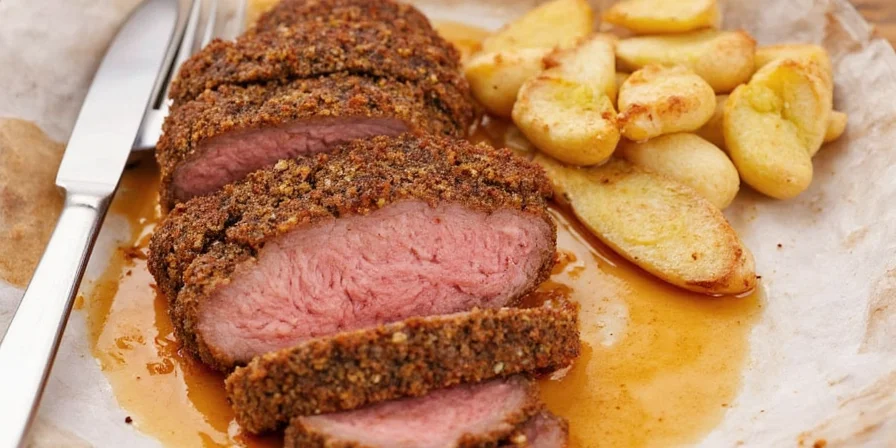

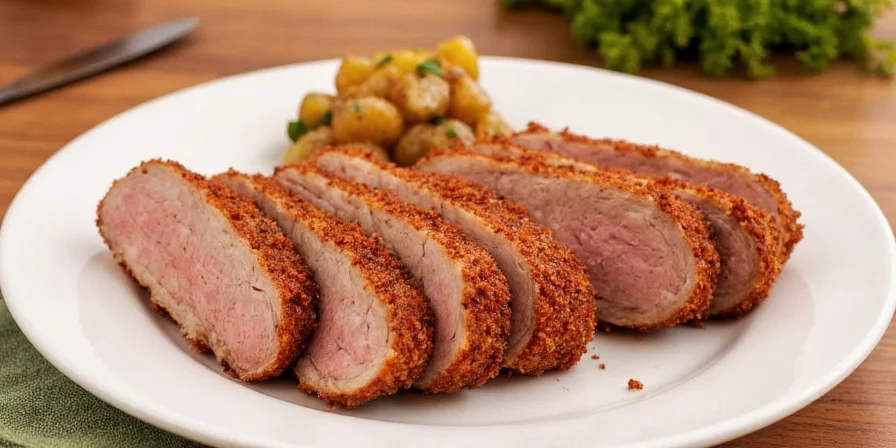









 浙公网安备
33010002000092号
浙公网安备
33010002000092号 浙B2-20120091-4
浙B2-20120091-4